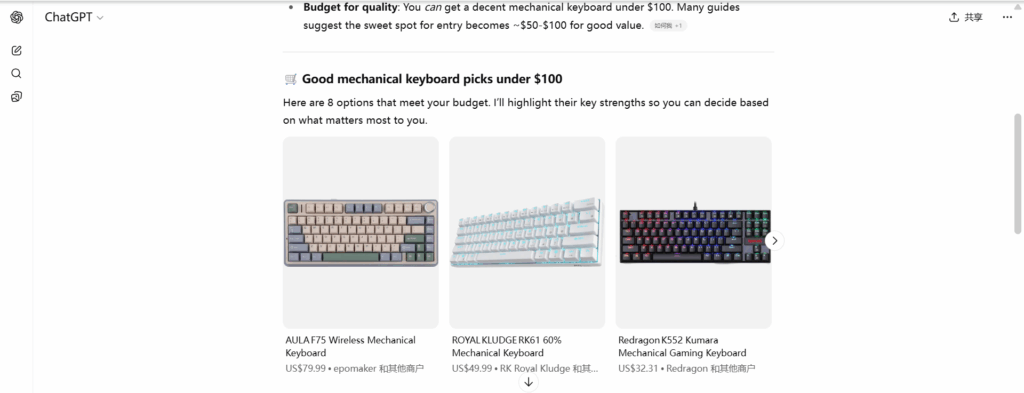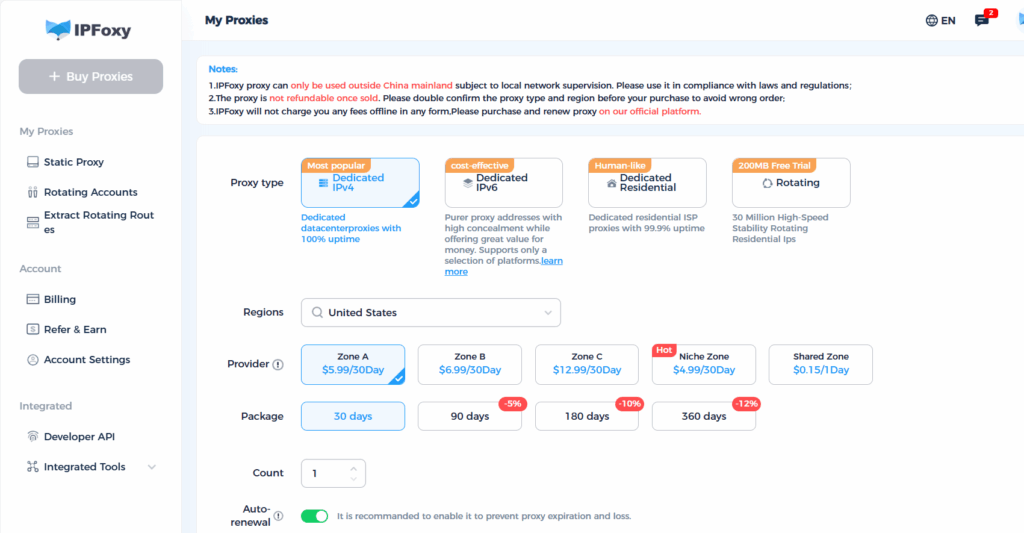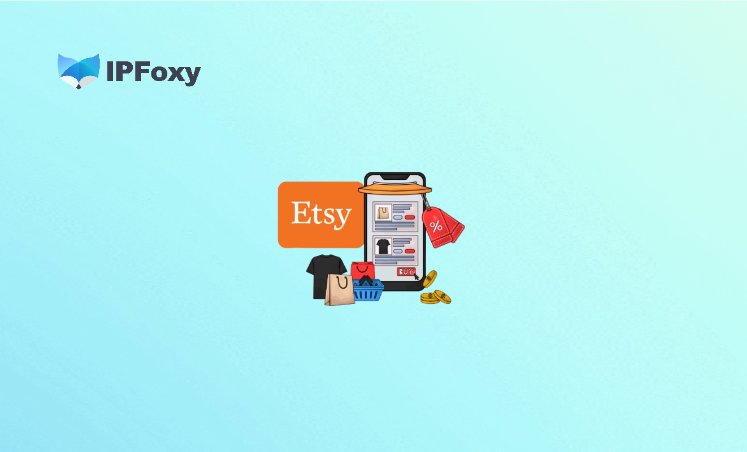Recently, OpenAI announced a major update — ChatGPT now supports shopping directly within chats. This means that when a user says something like “I want to buy a pair of running shoes in this style,” the AI will no longer just provide search suggestions. Instead, it can display products, show price comparisons, and even link directly to purchase.
In traditional e-commerce, users often go through multiple steps — searching, filtering, comparing — before making a purchase. With ChatGPT’s new feature, the entire process is compressed: Ask AI → AI recommends → One-click purchase. Because the path to purchase has been simplified, this feature deserves serious attention from sellers. AI is becoming a new traffic distribution center, not just a search engine add-on.
I. How Does ChatGPT Enable Shopping?
ChatGPT’s shopping recommendation system works differently from other platforms. Product recommendations are based entirely on relevance and context, not paid promotion. As long as your product descriptions are clear and accurate, ChatGPT will return the best-matched results.
To try it out, you can describe your shopping scenario, budget, and product needs — for example:
“I want to find a mechanical keyboard under $100.”

ChatGPT will then analyze web data, explain key buying points, and objectively suggest products that fit your needs. If you click one of the suggested products and the seller supports Instant Checkout in your region, you can complete the entire payment process inside the chat.
II. How to Optimize Products to Increase AI Recommendation Chances
From the process above, we can see that ChatGPT’s shopping algorithm is driven not only by product data but also by contextual information, user intent, and content credibility. In other words, AI is more likely to recommend products that are widely mentioned and referenced in real conversations. Here are several actionable ways to increase your product’s visibility and chances of being captured by AI.
1. Content Optimization
Unlike traditional search engines that crawl titles, ChatGPT uses semantic understanding to interpret product information. This means your product descriptions must be readable not just by humans but also by AI. You should create content across multiple social platforms, not just on your e-commerce listings.
For example, if you sell mechanical keyboards, you can post on Reddit:
“Which keyboard is best for programmers?”
Then, naturally mention your product’s features in the comments (switch type, key feel, price range, etc.).
Such organic Q&A discussions are treated by AI models as high-quality user feedback, making it easier for your products to be referenced in future AI recommendations.
2. Multi-Account Matrix Strategy
AI recommendation models also consider user behavior signals such as discussion frequency, shares, and mentions. Relying on a single account limits content exposure. Instead, create a multi-account matrix to boost brand visibility.
Build several accounts around your product niche:
- The main account focuses on product launches.
- Sub-accounts share reviews, usage scenarios, and answer questions.
However, when managing multiple accounts, be cautious about account linkage and environment risks. Platforms like Reddit and Quora have strict detection mechanisms, and linked accounts can easily be suspended.
To avoid this, use IPFoxy dedicated static residential proxy, which help each account maintain an independent, secure online identity with a unique IP address. This setup enables a one-account-one-IP environment, protecting your network while ensuring your content looks natural to both platforms and AI systems.

3. Strengthen Brand Credibility
When recommending products, OpenAI also considers brand credibility and external references. In simple terms, AI prefers brands that are frequently mentioned, cited on other sites, and linked externally.
- Add detailed brand introductions and FAQs on your brand page to increase visibility.
- Keep brand naming consistent across all platforms to reinforce recognition.
- Maintain regular content output connected to real usage scenarios to stay active and trustworthy.
High user engagement — such as reviews, discussions, and mentions — strengthens these “trust signals” that influence AI’s ranking behavior.
III. Conclusion
ChatGPT’s shopping recommendation feature represents a new traffic opportunity for online sellers. Only by continuously optimizing marketing strategies and staying aligned with technological trends can you fully seize the benefits of AI-driven traffic and turn recommendations into conversions.
Hopefully, this article helps you understand the implications of this update and how to take advantage of it effectively!


